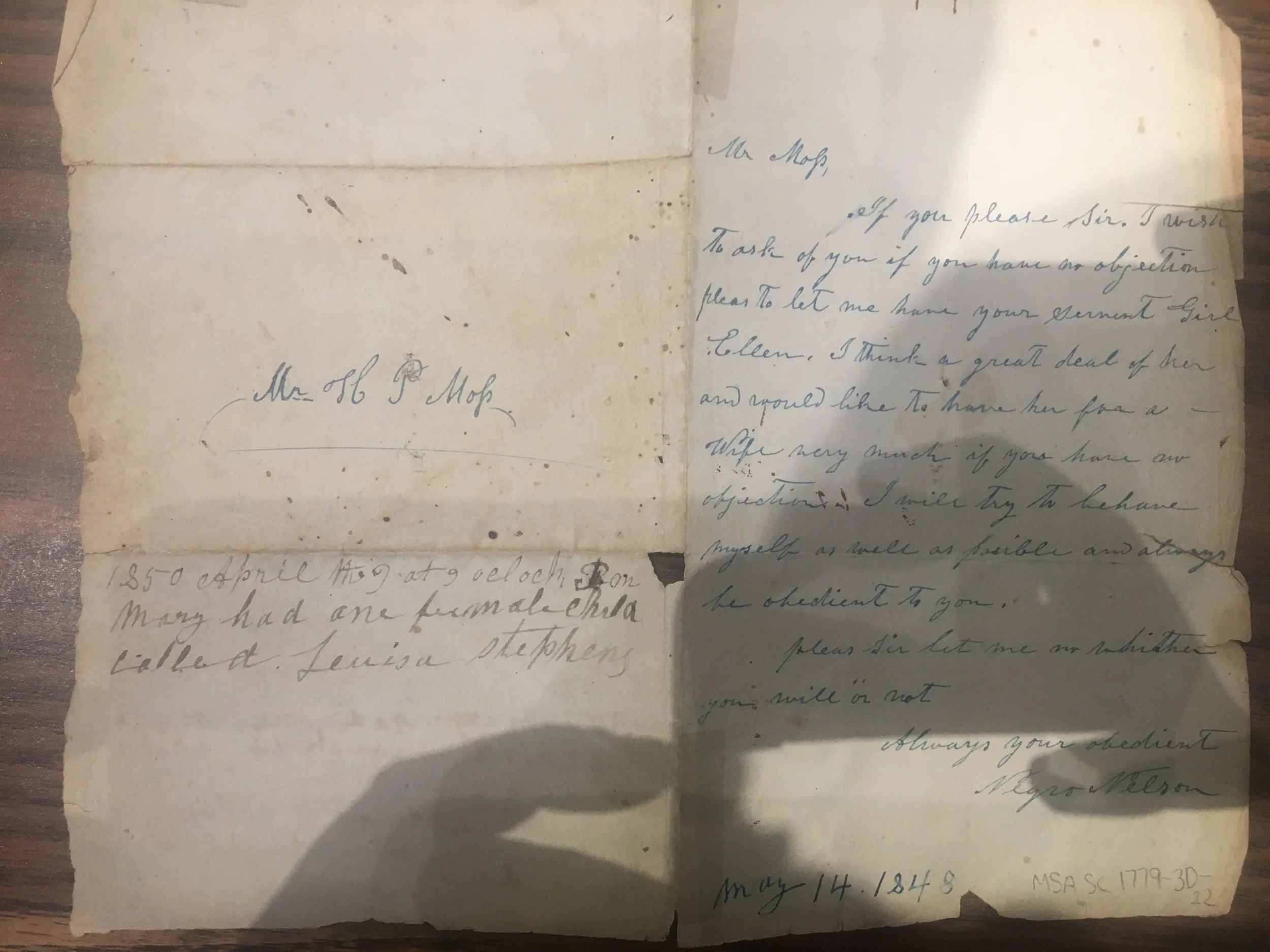Ellen Stephens
-
[This is an edited excerpt of Dr. Jennie K. Williams's forthcoming book, Oceans of Kinfolk: the Coastwise Traffic of Enslaved Persons to New Orleans, 1820-1860. Please do not cite or circulate without permission.]
At half past 11 o’clock on the morning of Monday, March 25, 1839, Captain James Crowell guided the 240-ton ship Seaman out of Bowley’s Wharf in downtown Baltimore. Onboard were 54 enslaved people, most of whom were claimed as “property” by the interregional traders Hope Slatter, Shadrach Slatter, and Theophilus Freeman: men who would sell the captives as soon as they reached the ship’s destination, New Orleans. Two young children, however, were enslaved by one Hamilton Pike Moss: Ellen, six years old and sometimes called “Nelly,” and Robert, nine. Until embarking onto the Seaman, Ellen and Robert had probably lived at the Moss homestead on the cape known as Hackett Point in Anne Arundel County, Maryland. Now, however, Moss was migrating to Macon County, Missouri via New Orleans, and he had decided Ellen and Robert were going to go with him.
Shortly after reaching Missouri, Moss decided to change the names of the two children. Robert would become “Richard,” he decreed, and Ellen would become “Mary.” Moss’s correspondence gives no explanation for the renamings. In fact, were it not for a line, painful to read, in a letter to Moss from his nephew—“Mother tells me you have altered the names of your two pets, from Robert and Nelly, to Richard and Mary”—Moss’s papers would give the impression that Robert and Ellen had disappeared into thin air.
At six and nine years of age, however, the children may not have welcomed their new identities, old enough as they were to have grown accustomed to the names they were given at birth. This seems to have been the case because, nearly a decade later, the matter of names was still unsettled.
By 1848, Ellen and Robert, both teenagers, had returned to Maryland with their enslaver, and a young man named Nelson Stephens was asking for Ellen’s hand in marriage. Because Nelson and Ellen were enslaved, their marriage depended on the consent of their enslavers. Nelson thus wrote Moss a letter. Given the stakes of this correspondence, the would-be groom surely chose his words carefully, yet—and whether or not he realized it—Nelson’s letter contained a measure of defiance: he referred to his intended not by the name Moss had given her, Mary, but by her true name. “I wish to ask if you have no objection,” he wrote, “pleas[e] to let me have your servant girl Ellen. I think a great deal of her and would like to have her for a wife very much.” Moss initially refused Nelson’s request but relented when Ellen, whom he continued to call “Mary” in his correspondence and records, informed him that she was pregnant with Nelson’s child. Still, for as long as he claimed Ellen as his legal “property,” Hamilton Pike Moss continued to refer to her as “Mary.” And for just as long, and even longer, including when she was no longer anyone’s supposed property, Ellen insisted her name was just that, Ellen.
Historical records from Ellen Stephens’ life
-
This is an excerpt of a letter to Hamilton Pike Moss from his nephew, David Hanlon.
-
This is the letter Nelson Stephens wrote Hamilton Pike Moss. Because it is signed "Negro Nelson," and because enslaved people were prohibited from literacy, it is likely that Nelson asked someone to write this note for him.
Also, note Hamilton Pike Moss's notation about "Mary" (Ellen) giving birth to a child named Louisa Stephens. This was the clue that led Dr. Williams to discover that Nelson's last name was Stephens. This, in turn, allowed her to uncover the identity of his enslaver and other information.
-
This is the manifest of the voyage that carried Ellen and Robert from Baltimore, MD to New Orleans. You can read more about records like this one here.


